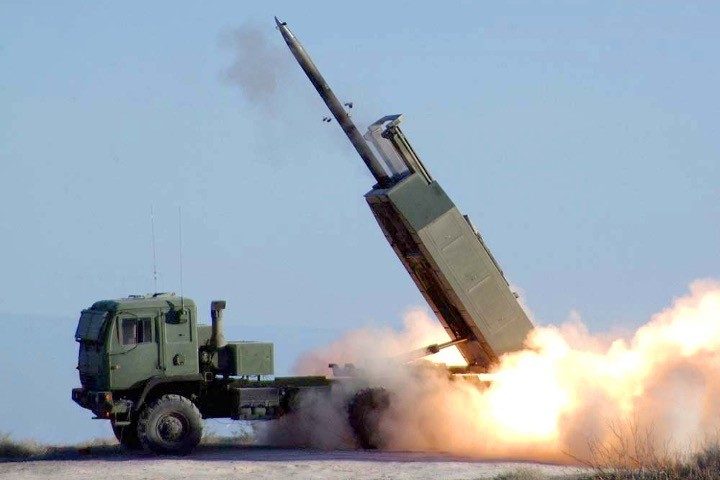
SINGAPORE — Australia declared on Jan. 5 that it would be investing over A$1 billion to purchase new naval missiles made by Norway-based Kongsberg and a land-based, long-range, surface-to-surface High Mobility Artillery Rocket System (HIMARS).
Notably, the missile system Australia plans to purchase is the same one that Ukraine has deployed on the battlefield against Russian forces. “The effectiveness of the HIMARS system in the Ukraine conflict has certainly influenced the government’s decision,” Defense Industry Minister Pat Conroy told the Australian Broadcasting Corporation (ABC). He added that the government acted swiftly to order the missiles to guarantee its place in the queue, given a “massive increase” in worldwide demand for HIMARS.
Minister for Defense Richard Marles said that “In the current strategic environment, it’s important the Australian Defense Force is equipped with high-end, targeted military capabilities.” He added that the technology encompassed in these acquisitions would propel Australian forces to the forefront of modern military hardware. The country aims to deploy HIMARS, which entails launchers, missiles, and training rockets, in 2026-2027.
The rocket launcher would not only deter attacks on Australia, but could also be deployed by plane to other countries. When questioned if HIMARS would be deployed in the Pacific region, where China has rising military and diplomatic influence, Conroy replied that the seamlessness with which it could be taken anywhere in the world made it a “really fundamental asset.”
Australia has been increasing its defense spending over the past few years as China looks to raise its clout in the Indo-Pacific region.
Last year, Australia indicated its plans to spend at least A$10 billion to construct a new base to store a future fleet of nuclear submarines, as then-Prime Minister Scott Morrison warned that the Ukraine crisis will “inevitably stretch” to the Indo-Pacific. The project would be the first construction of a major new base in Australia since the 1990s, Morrison announced in a foreign policy speech in Sydney.
The Defense Department chose three possible east coast locations for the submarine facility — Newcastle and Port Kembla in the state of New South Wales, and the Queensland capital of Brisbane.
Australia also stated that it hoped to build and start operating a fleet of nuclear submarines in the coming decades with the help of Britain and the United States. The new defense capacity could give Australia more room to assert its weight throughout the Asia-Pacific region. Speaking to the ABC, Defense Minister Peter Dutton said there would be an announcement on the design “within the next couple of months.”
Before Dutton’s announcement, Australia already had one submarine base on the country’s west coast, where its aging fleet of Collins-class submarines is located. Morrison said the west coast base will still operate even after the new facility is ready.
The initial work on the new facility is slated to be completed by the end of 2023, based on reports from the government. “There will also be significant benefits for local and national industries in supporting the new base and the more complex and larger nuclear-powered submarine fleet,” Morrison said.
2021 also saw Australia formally joining a hotly debated program to arm its navy with nuclear-powered submarines in a new defense alliance with the U.S. and Britain. Australian Defense Minister Peter Dutton joined U.S. and British diplomats in signing a deal permitting the sharing of sensitive “naval nuclear propulsion information” among the nations.
It was the first agreement on technology to be publicly signed since the three countries announced in September 2021 the establishment of a defense alliance known as AUKUS. AUKUS was meant to tackle strategic tensions in the Pacific where Sino-U.S. competition has been heating up.
“With access to the information this agreement delivers, coupled with the decades of naval nuclear-powered experience our UK and U.S. partners have, Australia will also be positioned to be responsible and reliable stewards of this technology,” Dutton said in a statement.
With the deal, Australia can complete an 18-month study into the submarine procurement, Dutton said after signing it in Canberra with U.S. Charge d’Affaires Michael Goldman and British High Commissioner Victoria Treadell.
The sale to Australia of HIMARS launchers and associated equipment cost an estimated US$385 million, and the principal contractors for the deal were Lockheed Martin, L3 Harris Corp, and Chelton Inc, the Pentagon said.
In addition to approving the sale of the mobile rocket launchers to Australia, the U.S. State Department also greenlighted the sale of CH-47F Chinook helicopters and associated equipment to Egypt for an estimated cost of US$2.6 billion, and AIM-9X Block II Tactical Missiles and AIM-9X Block II+ Tactical Missiles to the Netherlands.
The Pentagon said the weapons sales could amount to as much as US$3.1.



